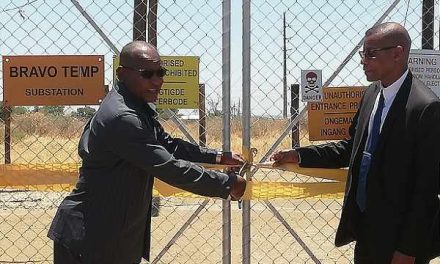
Rössing looks beyond 2040
Werner Duvanhage, Managing Director of Rössing UraniumHinges on development of Z20
Rössing Uranium recently announced that it has definitive plans to extend its operations beyond 2040.
This week, the mine announced that its expansion plans hinge on the Z20 uranium discovery, explored by Rio Tinto Exploration on behalf of Rössing. Preliminary drilling on the newly discovered resource was completed in 2013. Work detailing the mining arrangements for Z20 are on-going. The Z20 resource is similar in size to that of Husab’s Zone 1 or 2 and will constitute a significant addition to the economic value of Rössing Uranium’s ore inventory. It is the most significant ore body discovery in Rössing’s operational history and may bring the Rio Tinto mine on par with the Husab project.
Exploration was carried out in three phases of which the third was completed in April 2013.
The results upgraded the resource definition to “indicated” which required the formulation of initial mining plans and a need to conduct an Environmental Impact Assessment, the Chamber of Mines of Namibia reported in its annual review.
According to Werner Duvenhage, Managing Director of Rössing Uranium, the Z20 deposit has proven to be a significant resource, capable of extending the life of the mine to beyond 2040. He noted that the Z20 resource is of a good grade and is substantially better than the remaining ore currently mined by Rössing.
Duvenhage explained that exploitation of the Z20 resource will depend on a four-phase mining operation, with the last of the phases of particular significance as it contains ore of a fairly good grade. Mining of Z20 would only successfully be carried out if mined in conjunction with the current mining area, he explained.
“The future of Rössing depends on the overlaying phases,” said Duvenhage. He was cautious to add that mining Z20 would only be possible if the price of uranium reached levels of at least US$60/lb. “Our industry is currently experiencing challenging times, mainly because of global influences,” he said referring to the fact that uranium prices dropped to under US$40/lb in recent times. Mining would be feasible when ore is transported across the Khan River to the existing processing plant.
It is envisaged that the Z20 ore body would be mined as a satellite open pit, utilising the same methodology as is used currently in the main Rössing Uranium Mine SJ pit, and that a suitable method for transferring the ore over the Khan river by conveyor belt, is employed. In addition, mining of the Z20 ore body would require additional facilities for disposal of waste rock, an infrastructure corridor across the Khan River, production of sulphuric acid at Rössing, processing plant modifications, changes to the present tailings storage facility, and the establishment of a new high-density tailings storage dam on the Rössing dome.









































